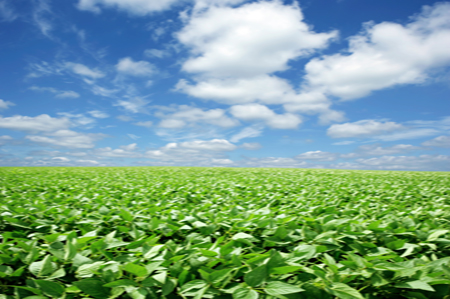 (Bloomberg)– Soybeans slipped in Chicago as investors weighed signs of tight supplies left over from the past U.S. harvest against planting that’s expected to reach a record in the country this year.
(Bloomberg)– Soybeans slipped in Chicago as investors weighed signs of tight supplies left over from the past U.S. harvest against planting that’s expected to reach a record in the country this year.
U.S. inventories probably totaled 987 million bushels on March 1, the lowest in 10 years for that date, according to a Bloomberg News survey before the U.S. Department of Agriculture releases its quarterly grain stocks report March 31. The USDA will release results of its national planting survey of growers the same day, which may show farmers will sow a record 81.16 million acres next season.
“Our biggest concern for this report will be bean acres,” Paul Georgy, the president of Allendale Inc. in McHenry, Illinois, said in an e-mailed note today. “Beans have found strength the last few weeks but it is hard for us to imagine continued strength as we get close to this report.”
Soybeans for May delivery fell 0.1 percent to $14.2425 a bushel at 6:32 a.m. on the Chicago Board of Trade. The oilseed is up 10 percent this year as U.S. stockpiles tightened after a surge in exports to China.
Corn for delivery in May fell 0.7 percent to at $4.865 a bushel in Chicago, paring yesterday’s 2.3 percent advance. Corn stockpiles on March 1 probably totaled 7.098 billion bushels, 31 percent higher than a year earlier, according to Bloomberg’s survey. U.S. planting may decline 2.5 percent from the prior year to 93.014 million acres, analysts said.
Wheat for May delivery declined 0.8 percent $7.0875 a bushel, reversing an earlier advance of 0.2 percent. Futures jumped 3.1 percent yesterday as dry weather caused crop conditions to deteriorate in the U.S., the biggest exporter. Milling wheat for November delivery in Paris fell 0.2 percent to 205.75 euros ($284.11) a metric ton on NYSE Liffe.
U.S. inventories of wheat dropped to 1.05 billion bushels on March 1, the lowest since 2009, according to the Bloomberg survey. Twenty-one percent of the winter crop in Kansas was in poor or very-poor condition as of March 23, compared with 20 percent a week earlier, while the crop in Texas rated 55 percent poor or very poor, up from 52 percent, the USDA said yesterday.




